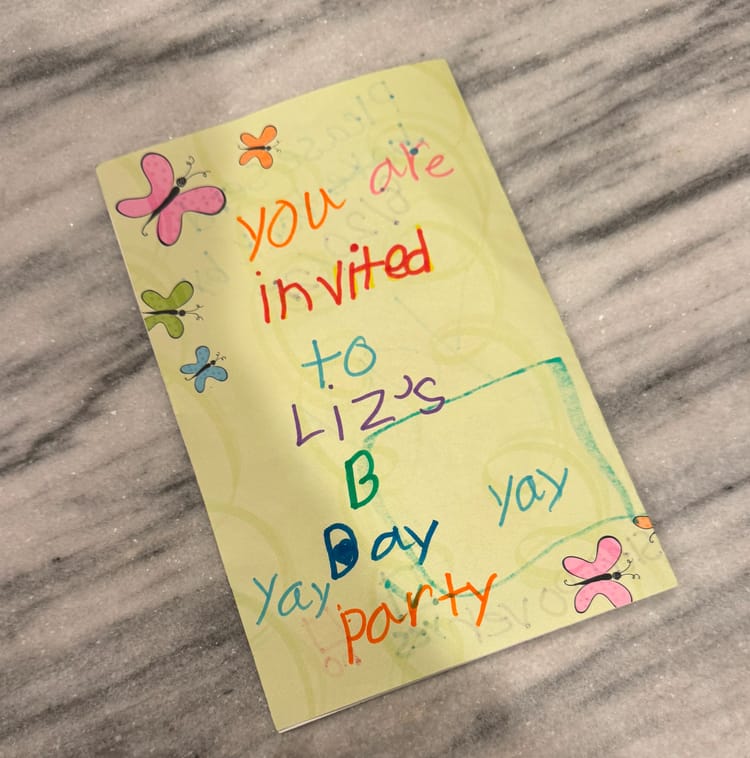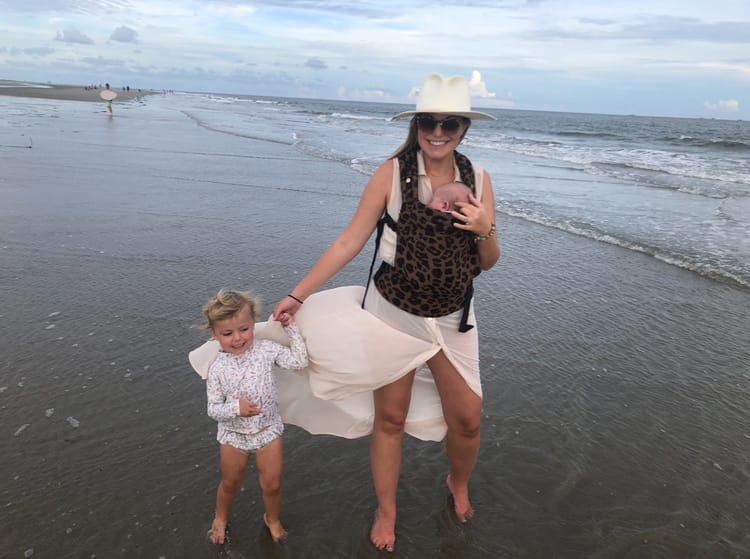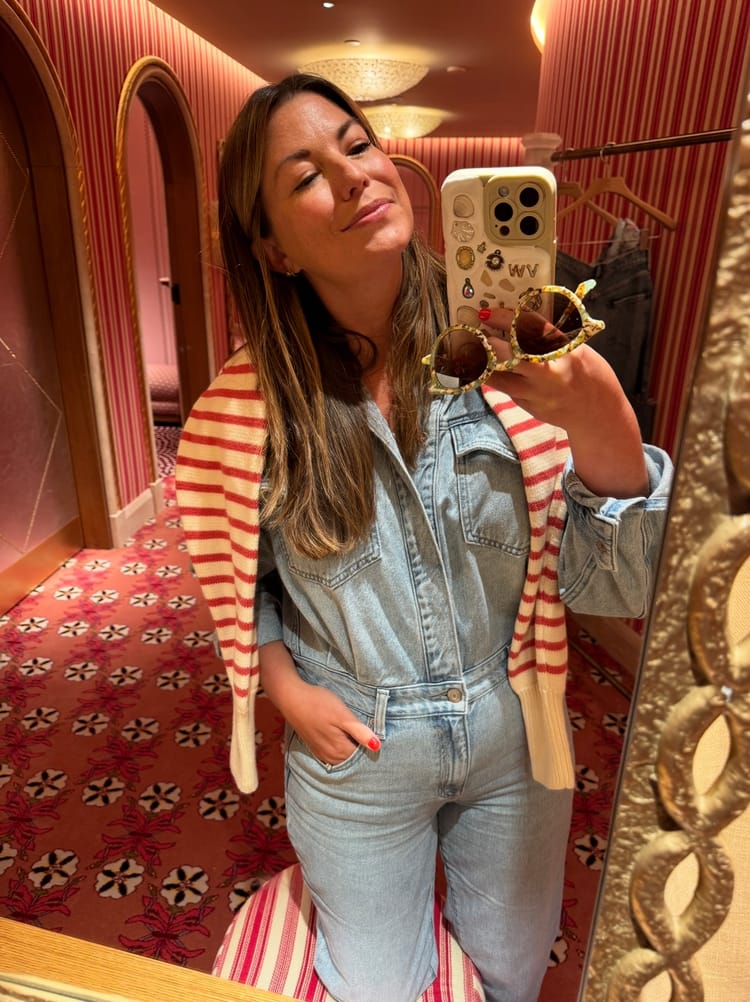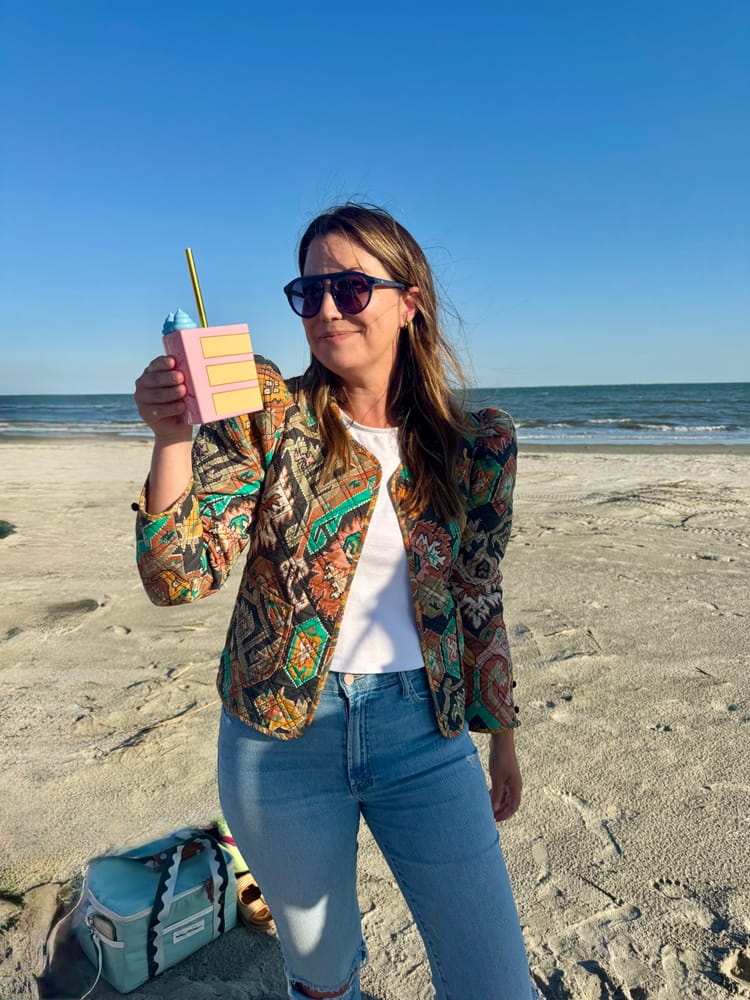The least reactive person in the room wins.
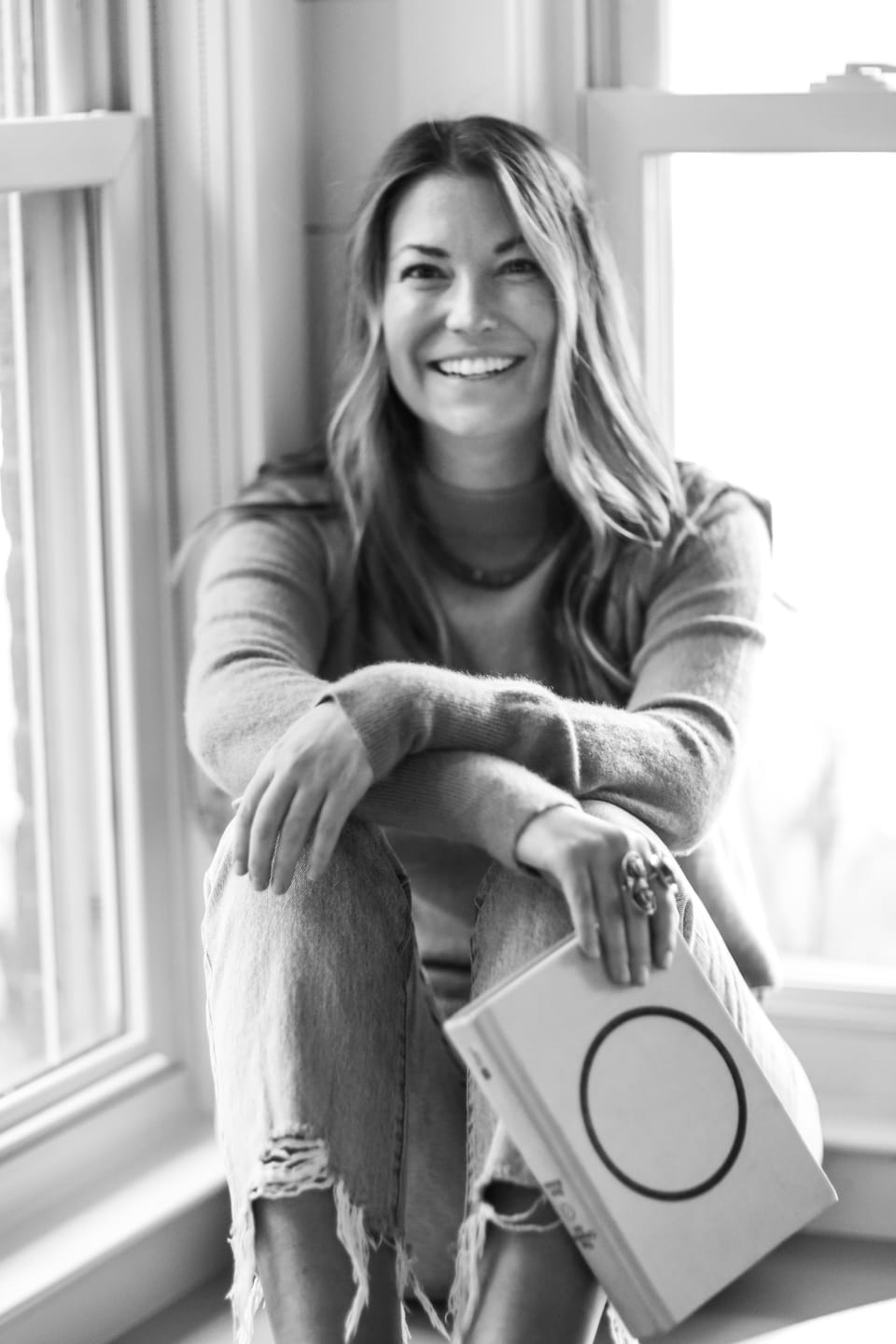
I was so pleased with myself when I easily came up for the topic of this week’s newsletter early last week. An article was put out by the Atlantic on the dangers of children and smartphones. The article quickly started to sweep through my social feeds of mom friends. As a techy and armchair futurist, I thought it would be the perfect time to point out that while looking at the dangers of the current iteration of smartphones was good and well, we need to also have a pulse of what it is quickly coming around the bend in technology. Smartphones curently have a target on their backs and Apple is feeling the heat and responding in very un-Apple ways, like ending a decades long project of smart car building, shutting down the apple watch redesign project, and acquiring an existing AI company to keep up with the pace of tech wars. The current pressure is to make phones faster and more intuitive, replacing apps with having the phones (or wearables is Zuck has his way) be a centralized hub with no need to move between the different silos of information stored behind independent apps. To the naked eye this sounds great and so helpful! From a parenting perspective, to make an already addicting device even more easy to use is staggering. I finished the article driving home my point on how the key takeaway from the Atlantic article should to educate ourselves on new tech so we don’t end up like the parents of the first social media generation who 1. didn’t understand how to use the tech so 2. couldn’t think about the dangers from a developed adult brain to then explain to the developing child brain using the tech. But after writing the newsletter it felt like another stressor on the readers day. Is step 1 really just educating yourself on tech? I woke up with clarity on what, I feel, is the first step one. How to grasp onto sanity in the chaos that is modern life. Aka put your face mask on before you help others. How can we read these articles that are so jarring and scary and be able to take away practical steps to actually help ourselves and kids? For me, that first step is meditation/ stillness/ silence/ good ole fashioned clarity, people.
What do you visualize when you read/hear the word meditation? I would venture to guess in a pre- insta guru world of 6+ years ago, it would have resembled something close to a Tibetan Monk sitting criss cross applesauce in his orange robes with a golden gong in the background setting the stage. Flash forward to now it might be a golden tanned 29 year old yoga teacher in a minimalistic studio smiling with closed eyes, capturing that “perfect” moment. For me? It’s myself sitting on the floor of my messy closet donning my ancient blue bathrobe my husband got me when we were dating that could survive a nuclear war with a depuffing mask slathered on and unbrushed teeth surrounded by a pile of “delicate wash only” laundry that wont see a sud of soap for weeks, if not months.
Why, dear readers, am I giving you this vision of me in my most vulnerable and least glamorous state?
Because we need to demystify a profoundly simple and yet profoundly transformative practice known as meditation. Even the word itself is confusing. Meditation stems from the latin meditatum which means “to concentrate or to ponder.” (look mom, I’m using my latin minor!) My meditation practice is actually the opposite of that. I use it to get silent. To cease the constant pondering. To turn down the volume on all the opinions, should do’s, annoyances, and grievances I’ve accumulated throughout the day. In today’s podcast I break down simple ways to get started on your meditation practice, but the goal of this newsletter is to break down the “why.”
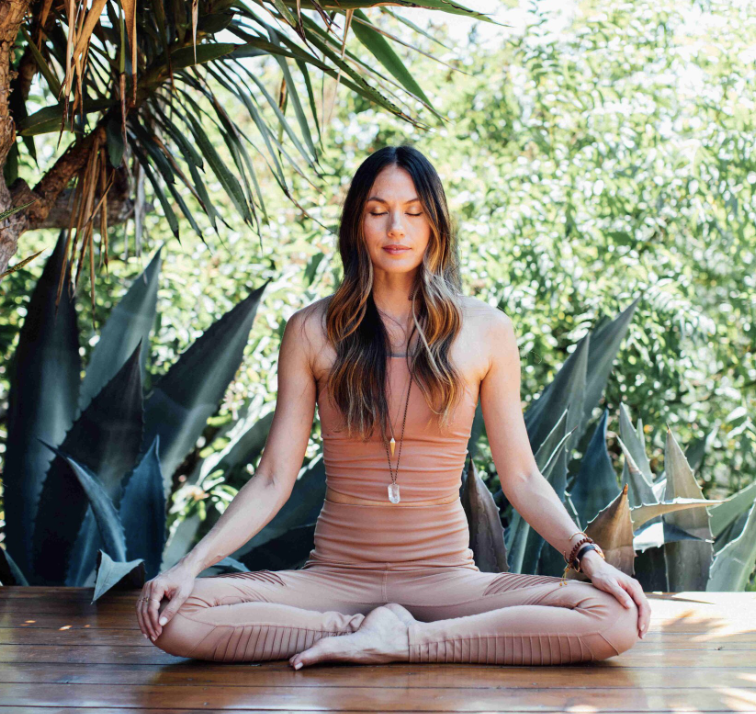
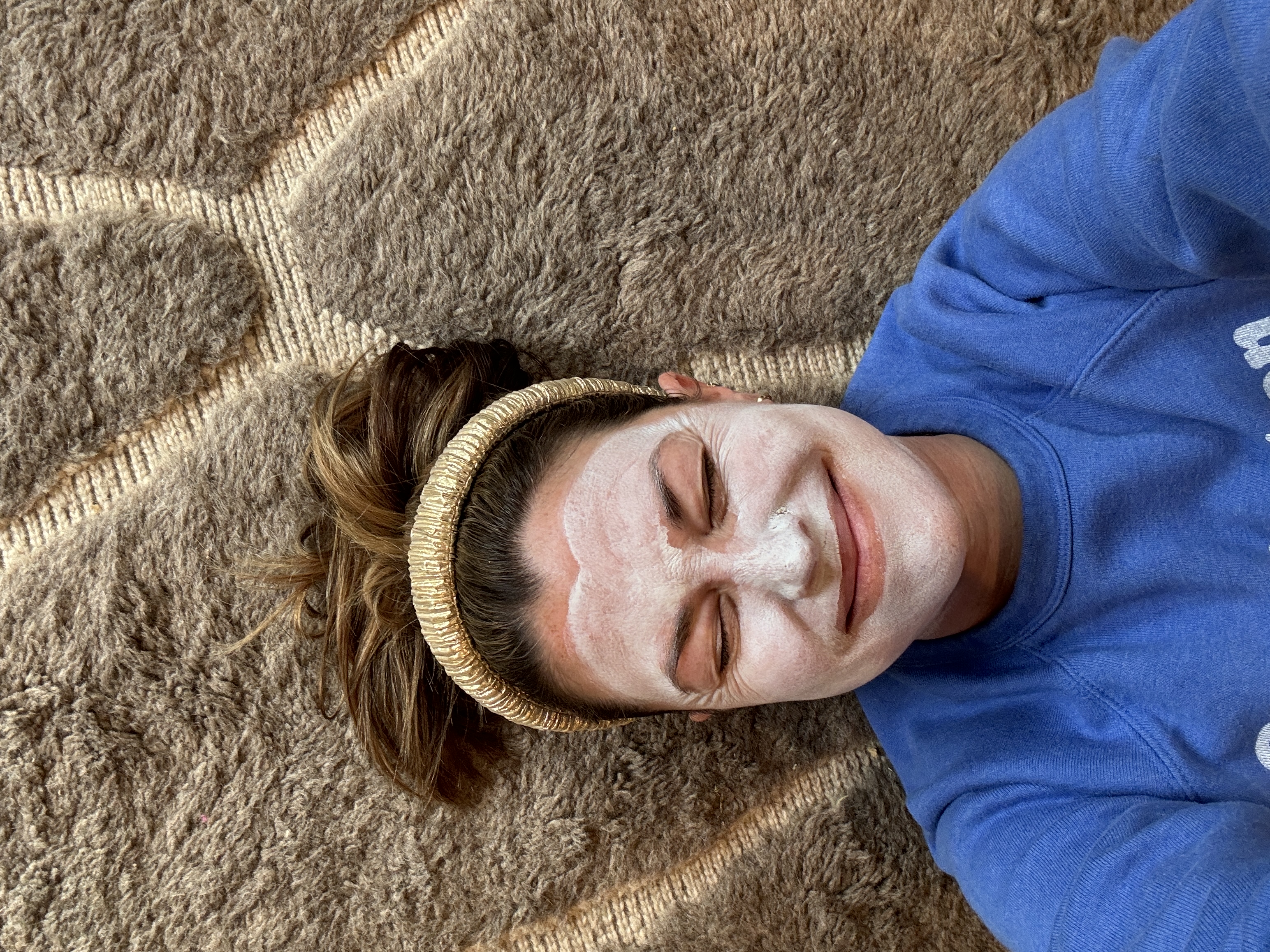
So let’s get to it.
Have you ever been to a side of the road “gem mining” experience? If not, fortunately for you, I don’t think I’ve ever successfully driven past one due to the thrill of the hunt being too enticing for me to stay my course of path, so I will set the scene. You are given a bucket of sand. In the bucket are hidden gems of varying sizes, shapes, and colors. Your job is to pull up a stool in front of the wooden makeshift water system and scoop your sand into mesh strainers and run them under the water until the silt and sand wash away and only the treasures are left behind and repeat until you have finished your bucket. It is one of my favorite things to do on vacation for the “kids.”
Think of step one in your meditation practice as the gem mining phase. We collect so much information throughout our days. It is estimated that every day, 328.77 million terrabytes of data are released to the public in some capacity. That is the equivalent of 164.385 trillion copies of War and Peace, 131,508 human brains worth of data, or 69.9 billion DVDs. And this was from last year before AI machines were cranking out even more! The average Tiktok user spends 90 minutes a day on the app and with the average video being 24 seconds, that is roughly 225 pieces of content consumed in one sitting. But as my own data has shown me (aka my insta story polls) you subscribers are mainly IG people so let’s break down your own personal stats. Let’s say you spend an hour a day on IG. You spend an average of 8 viewing seconds per post + stories. That’s roughly 8 pieces of data or content you consume in a minute. Over your daily total- that’s roughly 480 unique pieces you are viewing. Let’s let that sink in for a minute. That’s A LOT. The speed in which the apps move combined with the content creators of today having to keep pushing up extremes in their content to get you to pause and pay attention is enough to make even the Buddha’s brain feel stretched and lack clarity. Attention is the ultimate currency in modern commerce. So we need to wash away all of those opinions and sales pitches and egos we engaged with throughout our day and see what gems are left that actually serve you.
The second goal I have in my meditation practice, after dejunking, is learning how to find my homeostasis in my nervous system. You know when you do a cleanse or you stop eating a certain junk food for a while, you come back to it and you are like how in the world could I absentmindedly have drank an entire coke?? Its sooo sweet and so filling. Mediation is my cleanse. It brings my resting heart rate down and reminds me of how I have gone throughout my day at this high elevation that is not what I should be living at and sadly has become our norm. The more you grow your tolerance for silence and regulated nervous system, the least likely you are to get sucked back into them, just like when you have that piece of candy you used to love as a kid and you are grossed out by it now. It keeps me honest about what level of stress and noise is too much- we have to identify our baseline to be able to know when we are away from it.
My third goal with mediation is to limit my reactivity. Ray Dalio says it best “the least reactive person in the room wins.” When you can take back the power from your emotions and are able to actively turn down the volume on the loud ones (anger, annoyance, disappointment, sadness, etc) and turn up the volume on nuanced ones (creativity, adaptability, empathy, understanding) you can get through any situation in a way you can be proud of and that actually provides meaningful value in the longrun. Now this is VERY different from tamping down your emotions and “sticking to your guns.” I actively loathe that sentimentality. I believe our emotions make up a huge part of the puzzle in how we make decisions, but they should just be a piece, not the whole pie. I think when you over-correct and take emotions out, you are left with a wall of “this is how it’s always done and there is no way I am going to change it and you cannot make me” which gets us nowhere (and to today’s political landscape.) Being less susceptible to reactivity leads to creative solutions, confident decision making, and making things that are sustainable, not just a solution to a temporary problem. I fully believe that the winners of the next generation are going to be the creative solutionaries. Not the smash and grab control types we have seen on top over the past few decades, we need empathetic outside the box thinkers to get us out of this dumpster fire.
My fourth goal in mediation is to grow my intuition. Once you start learning to train your eyes to see clearly outside of the confines of emotions and opinions, you start to notice others around you with clarity as well. The reactionaries start to jump out even stronger. Your tolerance for being in high unnecessary stress gets lower. It gets even easier to define your boundaries because you know how long it will take to come down off of a setting that junks you up and you just can’t handle that poor ROI on your time. You start to see the snake oil salesmen faster, you can read an article about business without feeling like you need to uproot your entire system and start over because you see where the sales pitch is leading. It makes me be able to flow through my day and parse out where I should actually be spending my time soooo much easier.
As with all of my tangents, I could go on about this for days. Step one is not educating yourself on what’s happening in the world. Step one is educating yourself on yourself. How to learn your own voice. Your own way of making decisions. Your own way of shifting out what others want to put on your for their monetary or ego gains to find your own gems.
My hope is this reaches someone who has been thinking about a practice or had a rule filled practice that was too challenging to keep up. The best practice is the one you actually DO. I have a pod out today that goes over simple ways to get started that I hope can help you if I sold you on my “whys” :)
Thank you for reading and I hope you find some gems today.
Victoria
There are few words that spark joy more quickly these days than “you have a new follower on substack!” so if you enjoyed this and would like for me to send you more, I’d be downright delighted

